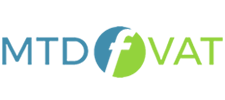When researching and reading about Making Tax Digital and now with so much information available to you – it can sometimes be quite confusing!
We understand how important it is for you to get started with the right MTD solution for your business. We help our customers stay ahead of the game (within tax of course!) by ensuring that we are proactively compliant.
We have put together ten myths that will help to understand MTD more.
- “I cannot use bridging software after the 12-month soft-landing period ”
- Answer: HMRC recognise the need for bridging software as an important form of digital transfer, and it is not just for the soft-landing period
- “I cannot use spreadsheets for digital record keeping ”
- Answer: In the very early days of MTD HMRC did try to prevent the use of spreadsheets. However, HMRC now recognises spreadsheets as an acceptable form of digital record keeping. Again, this is not just for the soft-landing period.
- “I cannot make adjustments to the VAT data once exported from the bookkeeping software ”
- Answer: HMRC recognises that some of the more complex VAT adjustments, e.g. Flat Rate Scheme must be made outside of bookkeeping software, generally, once the base data has been exported to a spreadsheet. Any such adjustment must be documented in the spreadsheet to preserve the digital trail.
- “I must submit to HMRC all of the transactions that make up the VAT return ”
- Answer: In the very early days of MTD, HMRC was hoping to collect, in real time, every individual account posting made in every accounting package by every business in the land. That is no longer the case, and for MTD for VAT, HMRC only wants the nine boxes of numerical data that make up the VAT return.
- “I must upgrade my older bookkeeping package to use MTD enabled cloud accounting bookkeeping software.”
- Answer: Any record keeping software can be used as long as it keeps the individual transactions in a digital form, and it can transfer the VAT return data in digital form (e.g. CSV file or API link) to MTD enabled bridging software.
- “My specialist, a record keeping software, must interact directly with HMRC for Making Tax Digital”
- Answer: Almost any software can interact with HMRC directly for MTD, but it’s a fair amount of work to do this. It is perfectly acceptable for your specialist record keeping software to utilise bridging software to submit the MTD VAT return to HMRC.
- “I can just type in the nine boxes of information”
- Answer: To comply with MTD for VAT, you must keep your accounting transactions in a digital format, and the transactional data must be used to calculate the nine boxes of the VAT return automatically.
- “A CSV data file transfer is not a digital link”
- Answer: HMRC recognises a CSV file as an acceptable form of digital link between the record keeping software and the MTD submission software.
- “I cannot Copy and Paste data into an MTD VAT return ”
- Answer: HMRC does not consider the use of ‘cut and paste’ or ‘copy and paste’ to select and move information, either within a software program or between software programs, to be a digital link.
- “ I can leave MTD for VAT when I like”
- Answer: Once you have submitted your first MTD VAT return you cannot go back to the old VAT 100 submissions, even if you fall below the VAT registration threshold. The only way to leave is to de-register for VAT.
MTDfVAT is MTD-Ready for you:
We have already worked with many businesses and accountancy practices on HMRC’s private beta, to help prepare for MTD and successfully submit VAT returns!
We’re here to answer your questions, as we have already answered quite a few, can help you along the way. Contact the support team now on Tel: 0330 058 0900

